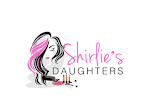WHAT CAUSES INGROWN HAIRS?
An ingrown hair happens when shaved or tweezed hair grows back into the skin. It causes inflammation, pain, and tiny bumps in the area where the hair was removed. Ingrown hairs are a common condition seen mostly in men who shave their facial hair. I have to also let you know it's most common in men but women are prone to ingrown hairs as well. The areas women are most prone to ingrown hairs to occur are the legs, armpits, and pubic areas.
This condition can happen to anyone. It seems that those that have curly coarse hair are also more prone to this condition. Curly coarse hair is more likely to bend back and re-enter your skin, even more so after a shave. Those that have higher hormone levels can have more hair than usual. When the hair bends back into the skin and gets trapped under the surface it is called a razor bump.
Most times the ingrown hair will go away on its own. When it does not clear up you could end up with an infection, scarring, and darkening skin.
INGROWN HAIR TREATMENT
There are ways to treat bothersome ingrown hairs. A doctor can make a cut to release the hair. The doctor may also prescribe medication, steroids that ease irritation, and Retinoids that remove dead skin and reduces skin pigment changes. Lastly, antibiotics to treat any infection.
TIPS FOR PREVENTION
- Rub your face in a circular motion every day using a wet washcloth or an exfoliating scrub to tease out ingrown hairs.
- Shave with a sharp single-blade razor.
- Wet your skin with warm water before shaving, and use a lubricating gel.
- Shave in the same direction your hair is growing.
- Use as few strokes of the razor as possible. That lessens the chance of hair slipping back into your skin.
- Rinse the blade with water after every stroke.
- Don't shave too closely to your skin. Leave a little bit of stubble if you can.
- If you're using an electric razor, hold it slightly above the surface of your skin.
- Apply a cool washcloth to your skin after you shave to soothe your skin.
Skin So Soft Fresh & Smooth Sensitive Skin Facial Hair Removal Cream
• Easily remove unwanted facial hair
• Leaves skin clean and smooth
• Contains meadowfoam oil
• Fragrance-free
BENEFITS
• Fragrance-free
• Can be used on sensitive skin
• Contains meadowfoam oil

.png)






Comments
Post a Comment